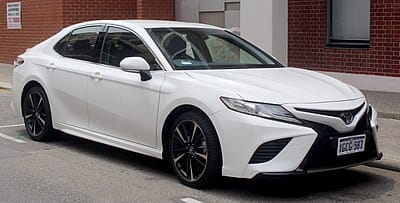Driving smart doesn’t require you to sacrifice comfort. Making a few minor adjustments to your driving behaviour can help you save on gas while enjoying life. We all drive for various reasons, including driving to work, school drop-off, or a weekend road trip. These tips can help you save on fuel while not hindering your enjoyment on the road.
Let’s explore seven simple and effective ways to save fuel—without losing the comfort of your drive.
Accelerate Gently
Why Gentle Acceleration Saves Fuel
Each time you floor the gas pedal, your car consumes many times more fuel than necessary. The engine is required to work harder when accelerating quickly, which means you will consume more fuel. Conversely, applying the gas pedal slowly and steadily allows your engine to operate in a more fuel-efficient manner.
Think of it this way: if you had an open cup of coffee on your dashboard, you wouldn’t want to spill it by speeding up too fast, right?
How to Do It
- Press the accelerator gently.
- When the light turns green, ease into movement instead of racing ahead.
- Aim to reach 20 km/h in about 5 seconds—smooth and steady.
This not only saves fuel but also makes the ride feel calmer and more pleasant for everyone in the car.
Maintain a Steady Speed
Why Consistent Speed Matters
Often changing speeds can waste a surprising amount of fuel. If you are speeding up and slowing down continuously, your engine will be working that much harder. Research has shown that changing speeds can increase fuel consumption by as much as 20%.
How to Do It
- Use cruise control on highways when traffic is light and safe.
- In city traffic, try to maintain a steady pace by observing the flow of vehicles ahead.
- Avoid rapid acceleration or sudden braking.
Staying steady not only saves fuel but also makes the ride smoother for passengers and reduces wear on your vehicle.
Anticipate Traffic Ahead
Why Looking Ahead Helps
By staying aware of what lies ahead— red lights, stop signs or slow cars in front of you—you can smoothly drive without unnecessary acceleration and braking. This means better fuel economy and a smoother ride.
How to Do It
- Watch the road ahead for traffic signals or slowing vehicles.
- When you see a red light or traffic jam coming, gently ease off the gas and coast instead of braking hard.
- Keep a safe distance from the vehicle in front of you to give yourself time to react.
This technique not only saves fuel but also makes your drive safer and more comfortable.
Avoid Driving Too Fast
Why Slowing Down Saves Fuel
Going faster will shorten your overall trip time marginally, but also use more fuel. Most cars are engineered to have their best fuel efficiency around 50-80 km/h. After you exceed this, the wind resistance increases and your car will use more fuel to maintain speed.
For example, driving at 120 km/h instead of 100 km/h can use up to 20% more fuel.
How to Do It
- Stick to the speed limit.
- On highways, try to drive at a steady pace within the 50–80 km/h efficiency range if possible.
- Avoid sudden speed boosts unless necessary for safety.
Driving a bit slower often leads to a calmer ride, lower stress, and better fuel efficiency.
Coast Instead of Braking
Why Coasting Helps
Heavy braking loses all the energy of your moving car. if you take your foot off the gas and let your car stop on its own with only the brake to stop you you will waste less fuel and reduce brake wear.
Some newer cars even stop using fuel completely when coasting in gear.
How to Do It
- When approaching a red light or stop sign, take your foot off the gas early and let the car slow down on its own.
- Only brake when it’s absolutely necessary to stop.
- Coasting works especially well on downhill roads and when you’re approaching traffic lights.
This trick not only saves fuel but makes every stop feel smoother and easier.
Keep Your Tires Properly Inflated
Why Tire Pressure Matters
If your tires are low on air, your vehicle uses up more fuel to move. That’s because softer tires create more resistance on the road. Keeping them inflated properly can improve fuel economy up to 3%—more if they are very low to begin with.
How to Do It
- Check your tire pressure once a month and before long trips.
- Look for the recommended tire pressure on a sticker inside your driver’s side door or in your car’s manual.
- Use a good-quality tire gauge and fill them up as needed.
Well-inflated tires not only help you save on fuel but also make your car handle better and stay safer on the road.
Lighten the Load and Use AC Smartly
Why Less Weight and Smart AC Use Matter
Using your car’s trunk or back seat for heavy loads increases the weight your engine has to carry, thus increasing the fuel it uses. While air conditioning will increase fuel use regardless of the vehicle’s age, older cars will use much more fuel (compared to newer models). A third consideration is that driving at higher speeds with the windows down causes drag. Reducing drag will improve fuel economy.
How to Do It
- Take out heavy items from your trunk or backseat that you don’t need.
- Use AC in the city or when it’s really hot, but keep it off if you can drive with the windows down at lower speeds.
- On highways, it’s better to keep the windows up and use the AC wisely to reduce drag.
By lightening the load and managing your AC usage, you can enjoy a cooler, more efficient drive.
Bonus Tip: Try the Pulse and Glide Technique
What is Pulse and Glide?
The method called “Pulse and glide” consists of accelerating lightly to a speed (which is the pulse), than coasting or gliding without pushing down on the gas pedal until your speed drops (which is the glide). You will save approximately 20% on fuel—particularly hybrid vehicles—but it will work in standard vehicles also.
How to Do It
- Accelerate smoothly to your target speed.
- Take your foot off the gas and let the car coast until your speed drops by around 10–15 km/h.
- Then repeat the process when it’s safe and there’s not much traffic.
This technique is best for long, open roads without frequent stops.
Does This Reduce Comfort?
Not at all. In fact, these habits typically promote a more comfortable ride. A smooth acceleration, steady speed, and gentle braking make the ride more enjoyable. Your passengers won’t get thrown forward when you brake, and you will feel less fatigued after you have made long trips in your vehicle. In addition, your car will handle better when your tires are inflated properly and weight is kept to a minimum.
A Bit of Science Behind It
Every car engine has an ideal operating condition. If you push your car’s engine too hard with excessive speed, heavy loads, or continuous stop-and-go, then it ends up burning more fuel. In addition to that, simple maintenance items like changing the oil, changing the air filter, and tune-ups help your car work efficiently.
Real-Life Savings
By making these small changes, you could save a lot of money over the year. For example, if you usually spend ₹2,000 per month on fuel and cut your usage by 20%, that’s a saving of ₹400 every month—or ₹4,800 a year. That’s enough for a short holiday or to cover routine car maintenance.
And it’s not just about saving money—you’ll also reduce your carbon footprint and do your part for the environment.
Summary Table: 7 Easy Tips to Save Fuel
| Tip | How It Saves Fuel | Comfort Impact |
| Accelerate gently | Less fuel burned at start | Smoother ride |
| Maintain steady speed | Avoids frequent acceleration | Less stress, smoother |
| Anticipate traffic | Reduces braking/acceleration | Safer, more relaxed |
| Avoid high speeds | Lowers wind resistance | Calmer, safer drive |
| Coast to decelerate | Uses momentum, not fuel | Smoother stops |
| Keep tires inflated | Reduces rolling resistance | Better handling |
| Lighten load, wise AC use | Less engine strain, less drag | Comfortable cabin |
Final Thoughts
Saving gas doesn’t have to mean sacrificing comfort or convenience. With these simple driving habits, you will have a more enjoyable ride, save money at the gas pump, and help to be good to our planet. You don’t have to do everything at once – pick one or two tips to start with, and you’ll be on your way to experiencing both comfort and fuel economy soon.
Drive smart, save fuel, and enjoy the journey with My Car Wisdom!
Raja Yadav, the content writer at My Car Wisdom, brings a unique voice and style to our blog. With a knack for storytelling and a keen eye for detail, Raja ensures that every piece of content is informative, engaging, and easy to understand. His focus is on delivering high-quality articles that cater to both novice car owners and seasoned automotive enthusiasts.




